The Philadelphia Flyers have a history that now spans over seven different decades. Each time period was entirely different, but all helped to tell a story of the Flyers’ history. What occurred in every decade, and what was the final result in each?
1960s: Flyers Hockey Just Getting Started
A team in the new expansion era, the Flyers didn’t have the talent needed in order to compete for championships. With only two seasons in the 1960s, they made the playoffs twice but didn’t win a single round. Coached by the legendary Keith Allen, it was the first step of what was the first truly dominant expansion team.
One of the few more recognizable figures of the decade that was to follow, forward Gary Dornhoefer was with the Flyers from the very start. The team wasn’t scoring much, but he was one of their more productive forwards in the decade. Andre Lacroix was one of their best players at that time, leading the team in points in their second season in the league.
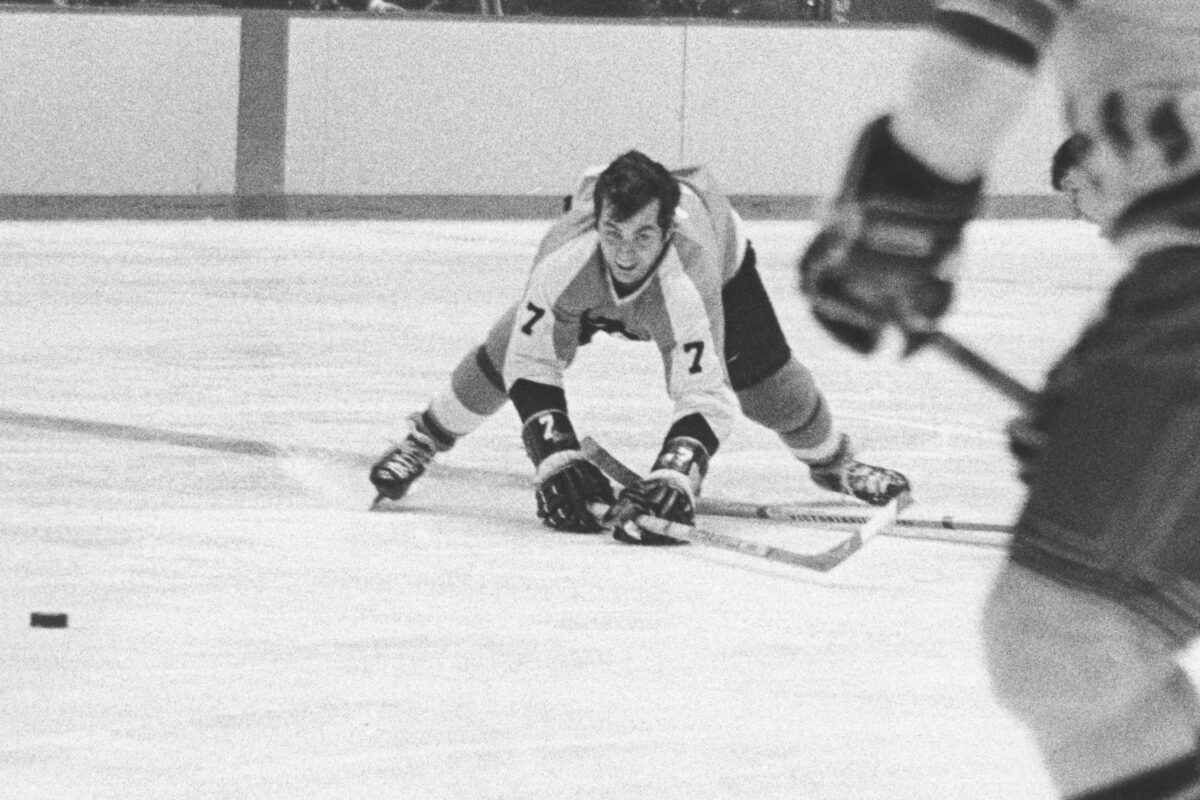
In goal, the Flyers had a young Bernie Parent making a difference. At just 22 and 23 years old, he gave the Flyers a save percentage (SV%) of .926 and .925 in his first two seasons even though he only won 32 of his 96 total games played. Still trying to find a game-changing skater, the Flyers selected forward Bobby Clarke in their last draft of the 1960s. They might not have known it, but they were in the process of building one of the defining rosters of the 1970s.
1970s: Flyers Bully Their Way to Championships
The Flyers didn’t have the strongest start to the 1970s, but their identity wasn’t truly established until later, either. At the beginning of the decade, they were a young team full of players trying to contribute to one of the newest teams in the NHL. With the Flyers still assembling their team, Allen became the team’s general manager (GM), while Fred Shero took over duties behind the bench. This duo became iconic, giving the Flyers some of the best hockey they have ever played.
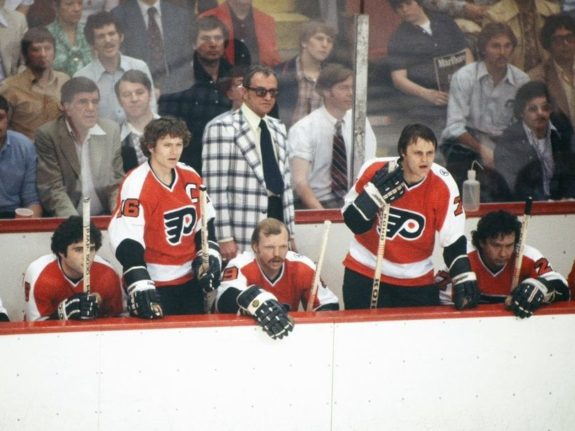
The Flyers later earned the nickname “Broad Street Bullies” due to their aggressive yet skilled nature in their play. They didn’t start winning right away, but that started in their 1973-74 season, where the team went from winning 37 games to 50 in a single season. Bill Barber, Rick MacLeish, Clarke, and Parent were the biggest contributors to winning hockey, but their depth was what allowed them to be a truly elite team.
The Flyers’ playoff run was sensational, and they were rewarded with their first appearance in the Stanley Cup Final. Facing the Boston Bruins, they shockingly took the series and became the first expansion team to win the Stanley Cup. They doubled down the next season, winning their second Stanley Cup in a row. Taking the league by storm, the Flyers became the new face of the NHL, competing with the teams that had been trading championships for the previous half-century.
Even though the Flyers did not win another championship this decade, their bullying ways still worked. In the 1970s, hockey was known for its physical play, and the Flyers were arguably the biggest contributor to it. The era was tough, but the group of players that the Flyers assembled was always tougher. From 1972-73 through 1978-79, the Flyers made the playoffs every season. Allen, the GM, gave his team a chance to win every season with his moves and drafting. After seeing a step back in postseason success, coach Shero resigned from the club prior to their last season in the 1970s. Amazingly, this worked out for the Orange and Black, beginning a shift in their team.
1980s: Flyers’ New Style of Dominance
The Flyers still had the tenacity and skill they possessed in the 1970s in the new decade, but their team was refined to adapt to a new era. They did this perfectly, advancing to the Stanley Cup Final three times in the 1980s, even as more teams started to join the league.
Fresh young players such as Tim Kerr, Brian Propp, Rick Tocchet, Pelle Lindbergh, and Ron Hextall made it possible. Not holding onto their success from the 1970s for too long, they made a shift at the perfect time into a young, superbly talented roster.
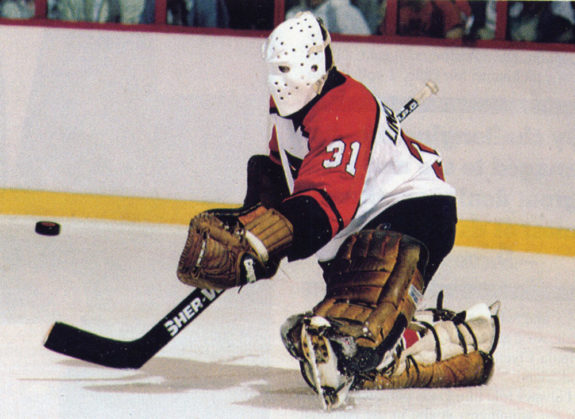
To start the decade, the Flyers went on a historical run that saw them go undefeated for 35 straight games. They had their first run to the Stanley Cup Final since 1975-76, led by many of the players who helped them get there in the 1970s. The Flyers were not to be rewarded with a Stanley Cup, but they did milk everything they could out of their now-veteran stars.
With a few seasons of decline, the Flyers found their way back into contention with a 49-win season in 1982-83. Now, with a new look and some great young players, the team started a shift. They didn’t win much of anything early on, but that changed in 1984-85. With just one player on the team entering the season over the age of 29, they were unique in the way that they were young and dominant. They reached the Stanley Cup Final but were bested by the Edmonton Oilers.
Related: Flyers’ 1984-85 Team Was a Pristine Display of Youth
Their star goaltender lost his life in a devastating accident, and the Flyers needed a spark to replace Lindbergh. Seemingly energized by the loss of their beloved teammate, Philadelphia tied their wins record in a single season with 53. They faltered in the playoffs but helped keep the streak of terrific Flyers teams alive.
The next season, the Flyers went back to the Stanley Cup Final, led by Hextall in goal. With no members of their 1970s teams, they had changed the way that Flyers hockey was seen. The team lost to the Oilers in the Final once again, but their path was one that could make them a powerhouse for years. Even though they hadn’t won the Stanley Cup since 1974-75, they were remaining atop the league when dynasties before them had already fallen from glory.
Some cracks in the Flyers’ foundation began to show in 1987-88, with just their second season below 40 wins since they won their first championship. Losing in the first round of the playoffs, their 16-season streak of making the postseason was in potential jeopardy. They went to the Conference Final the next season but only finished with 36 wins in the regular season. They ended the 1980s not missing the playoffs a single time, but a fall from grace appeared eminent when looking at the decline in wins.
1990s: Flyers’ Talent Leads the Way
The Flyers started their first official rebuild early in the 1990s, and that gave them immense talent that paved the way for years of success. The decade started off slowly, but the process helped the Flyers become one of the best teams in the NHL when more and more teams continued to join. The talent of players like Eric Lindros and John LeClair gave the team a clear identity, whereas a committee helped them be great in the 1980s.

Entering the 1989-90 season, the Flyers had only missed the postseason two times in their history, never doing so in consecutive seasons. From that point through 1993-94, the Flyers did not qualify for the playoffs five seasons in a row. All of that was part of a process, and it helped them land Lindros, a player who was seen as the next best forward in the NHL. When he was healthy, it was hard to debate that he wasn’t.
In his third season in the NHL, Lindros led the Flyers to the postseason for the first time since 1988-89, winning a Hart Trophy in the process. He, along with the recently acquired LeClair, went on to be one of the defining dynamic duos of the decade. They made some noise in the playoffs early on, but it wasn’t until 1996-97 that they made it all the way to the Stanley Cup Final.
In said Final, the Flyers were swept by a Detroit Red Wings team that wasn’t even favored to win the series. Following that season, the Flyers were early exits in the playoffs, only winning a combined 79 games across their last two seasons in the 1990s. With Lindros starting to consistently suffer from concussions and feuding with Clarke, the GM, there was a feeling of distress in the organization.
2000s: Flyers Shifting to Hard Work
The Flyers’ 1999-00 season was the beginning of the end of the Lindros era. Once again, he battled injuries that season and his issues went well into the playoffs. Amazingly, the Flyers advanced to the Eastern Conference Final, even holding a 3-1 series lead. By the time he was ready to return for Game 6 following a loss for Philadelphia, they had lost their mojo. They lost again, setting up a Game 7 on the road.
After sustaining arguably the worst of any his concussions in his entire career, his rights were dealt from the Flyers after he and Clarke’s feud reached a boiling point. Now being led by players like Keith Primeau, Simon Gagne, Mark Recchi, and Eric Desjardins, the team needed to rely on hard work more than ever if they wanted to give the Flyers another championship.
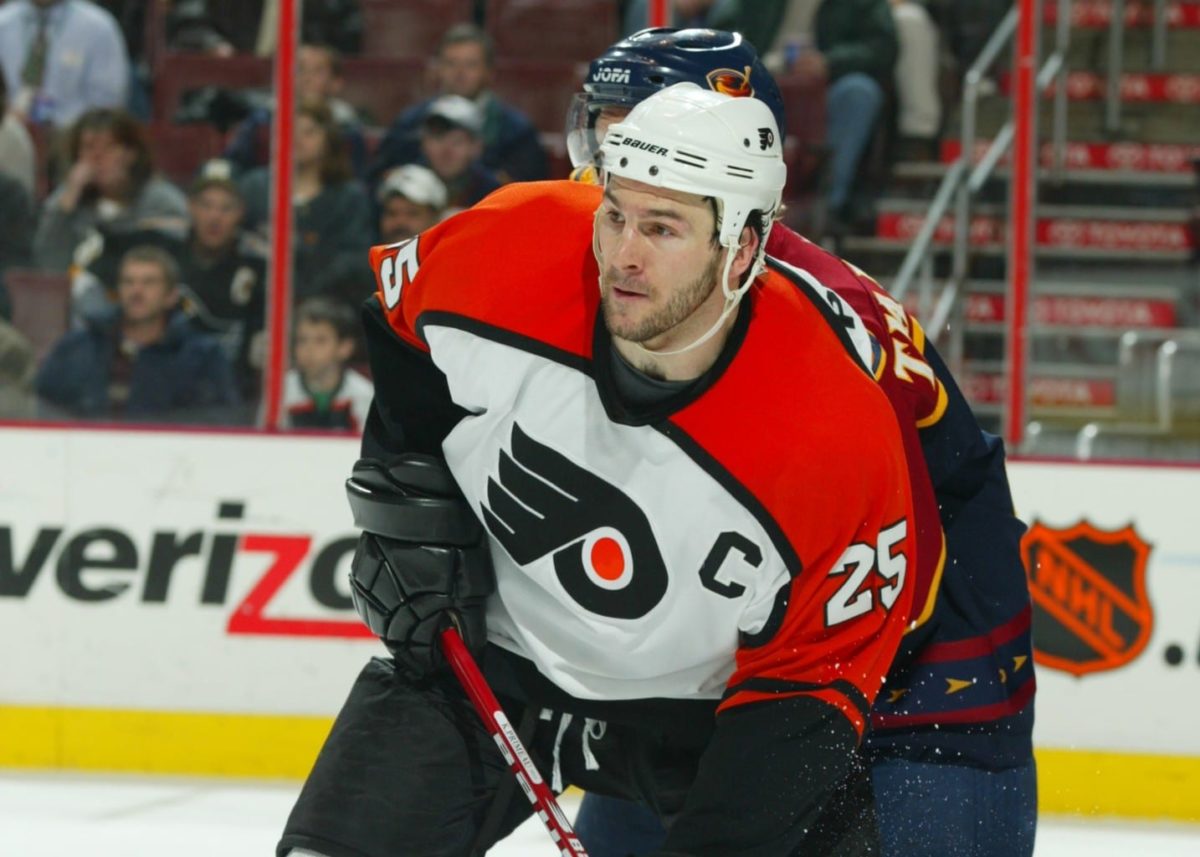
Without Lindros, the Flyers strung together a few good seasons but nothing worth noting in the playoffs. They were still consistently making the postseason but losing in the first or second round pretty often. This changed in the 2003-04 season, when the team’s hard work was finally rewarded.
The Flyers put every ounce into the playoffs that season, with Primeau leading the way with both the ‘C’ on his jersey and his play on the ice. They were a team led mostly by veterans in production, but that didn’t stop them from advancing to the Eastern Conference Final. They gave the Tampa Bay Lightning a huge test but fell short in seven games. It was a tight series, with the Flyers seemingly needing only a few things to go their way.
This is where the lockout came in, and it changed a lot for the Flyers. With a salary cap being implemented, they would no longer be able to massively outspend teams that were in a smaller market than them. Losing their 2004-05 campaign with no games being played, that set them back.
The Flyers had a good but uneventful season in 2005-06, following the course for much of the 2000s. That set up a disastrous 2006-07 season where the Flyers finished dead last in the league’s standings. In their worst season of their history, they weren’t even rewarded with a generational prospect in the draft. Franchise-altering talent was not going to be handed to them.
Following a down season, the Flyers made a complete turnaround thanks to their GM, Paul Holmgren. Aggressive in the offseason, he acquired several veterans to make the team competitive. This is exactly what happened, and the Flyers advanced to the Eastern Conference Final directly after that season. Their playoff run was eventually stopped short, but the future seemed promising. Making the playoffs in 2008-09 but losing early in them, the team was still relatively young and ready to have a breakout.
2010s: Flyers’ Winning Hockey Fizzles Out
For the Flyers, the 2010s started out better than any decade before it. Clinching the playoffs on a last-game, winner-take-all matchup against the New York Rangers in a shootout, the Flyers headed to the postseason with relatively low expectations. However, they shocked the hockey world with their fiery competitiveness and unwillingness to quit.
Led by the likes of Claude Giroux, Sean Couturier, Jakub Voracek, and Wayne Simmonds through most of the decade, a fast start quickly fizzled out. A promising beginning eventually led to the team trying to figure out their true identity through most of it.
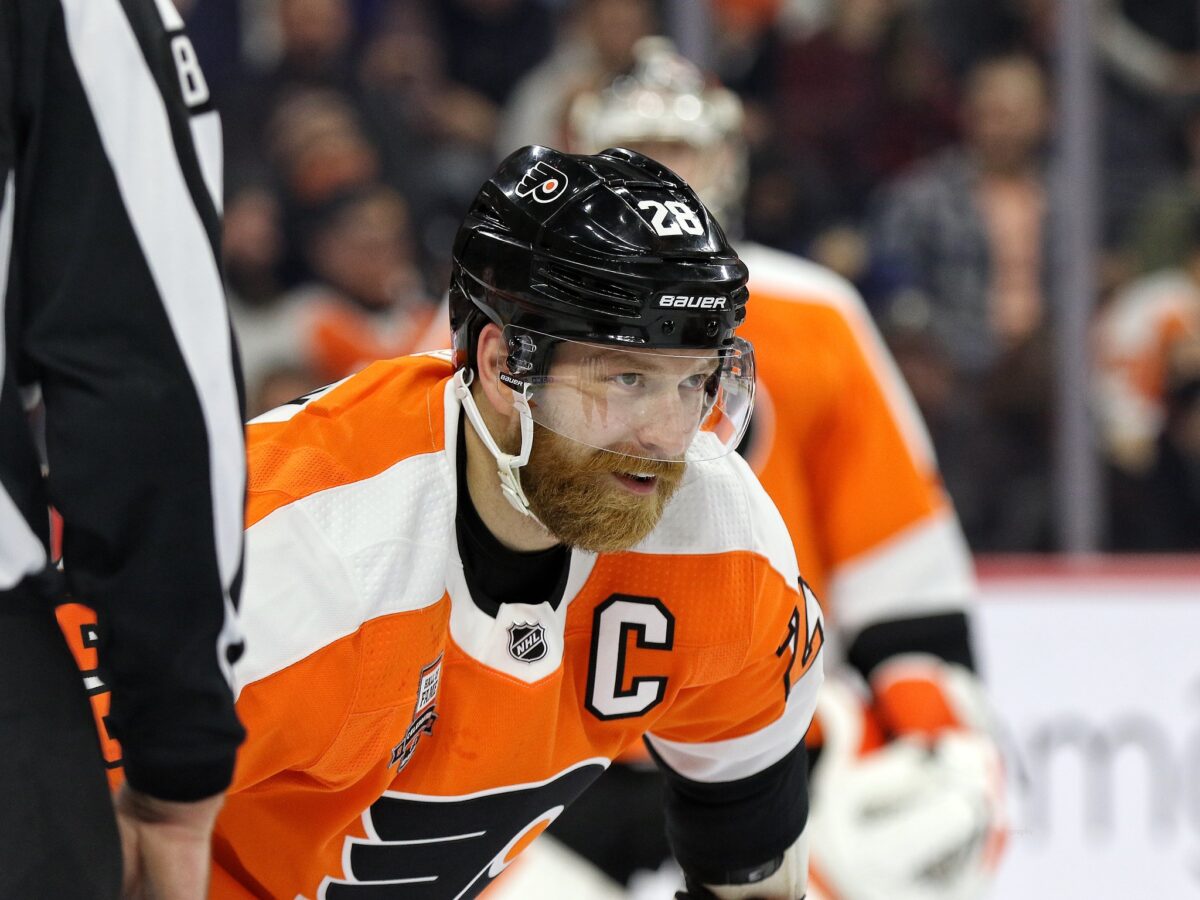
After the Flyers clinched the playoffs on the last game of the season, they made it clear that they would not stop at anything to grant Philadelphia a championship. Deficits and injuries were the story of that playoff for them, yet the team kept clawing back until an overtime loss in Game 6 of the Stanley Cup Final ended their run. Possessing their 2000s mantra of hard work, the hope was that they only continued to get better.
At first, the Flyers did get better, holding a 47-23-12 record in the regular season. Only winning four games in the playoffs, they needed much more out of their aging roster. Sensing there needed to be a change and that Giroux had already emerged as the true star of the team, Holmgren chose to deal veterans Mike Richards and Jeff Carter in exchange for some young players and draft capital. This completely altered the direction of the team, putting an emphasis on youth.
The Flyers’ 2011-12 season was successful, but it also started the decline of the team. Losing defenseman Chris Pronger to an eye injury in the regular season, he never played NHL hockey again. This left a glaring hole in their blue line and one that would be nearly impossible to replace. The Flyers improved their postseason record, but minimally, winning five games of the necessary 16. Losing defenseman another key defender in Matt Carle in free agency, they knew they had to make a splash.
Giving an offer sheet to star defenseman Shea Weber, they were unsuccessful in prying him out of the hands of the Nashville Predators. From that point forward, the Flyers looked endlessly for a defenseman to take them over the top. With an aging group on their back end, they were primed for a bit of regression. The Flyers traded first-round playoff exits and playoff misses year after year, missing the depth offensively and star power defensively that a championship contender needs. Giroux and Voracek were the two stars on the roster, but they alone were not enough.
The Flyers went through a miniature rebuild in the process, but it would be more accurate to call it a retool. The Flyers never had a season where they were at the bottom of the standings after 2011-12, but they never had one where they were near the top, either. Even with a couple of Hart Trophy-level seasons from Giroux, they were never able to get past the first round for the remaining seven seasons of the decade.
There was some youth sprinkled in for the Flyers, but nobody truly became the star the Flyers needed. Going through five different head coaches during the decade, they had their moments but never truly found the level of consistency that they showed in previous decades. With some seemingly good young players, there was a sprinkle of optimism entering the 2020s.
2020s: Flyers Try a New Approach
The Flyers’ 2019-20 season was on par with their best season since 2010-11 and was the spark that the Flyers needed in order to put their team back on the map in Philadelphia. Unfortunately, this was a red herring, with the following seasons trying to recapture that season’s success. Much like the decade before, they were chasing the success that had already passed. They were making the same mistakes as they were before, but a recent shift in philosophy has them changing the narrative.
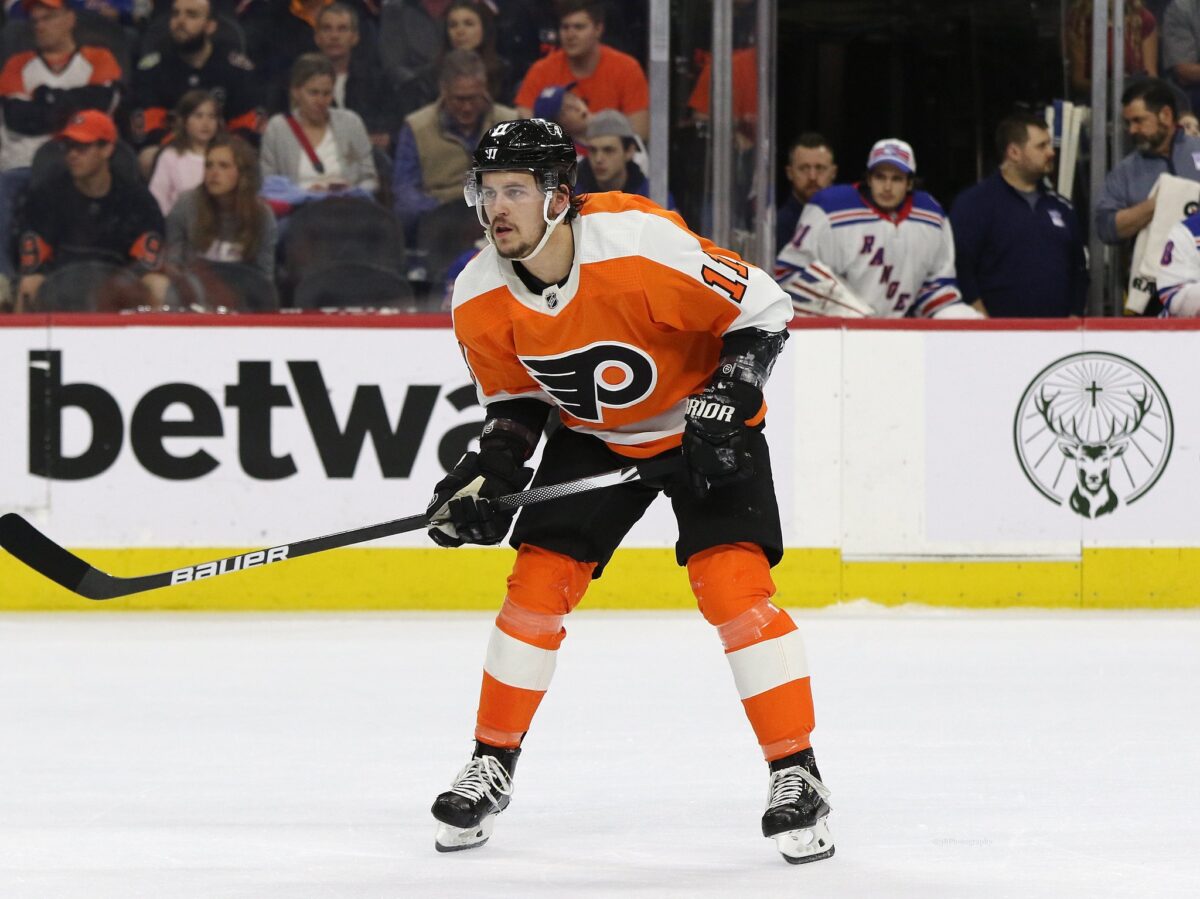
Interrupted by a stoppage due to a global pandemic, the Flyers ended their 2019-20 season with a 41-21-7 record. They had young pieces starting to play to their potential and even some that were not. They won their first playoff series since 2011-12 but fell to the New York Islanders in seven games in the second round. The takeaway was certainly positive, as a young team had won seven of the 16 games required to win a Stanley Cup. Little did they know, the Flyers had already reached their peak.
The Flyers had a massively underwhelming 2020-21 season and continued that into 2021-22 after GM Chuck Fletcher attempted to make the team competitive again. They weren’t and parted ways with their franchise cornerstone in Giroux during that trade deadline. This move began the shift from contention mode to rebuild mode.
Landing a key prospect in the draft in Cutter Gauthier at fifth overall was the highest the Flyers had drafted since 2006-07. After another poor season in 2022-23, the Flyers officially revisited the path of the rebuild they had gone through in the 1990s. Selecting Russian phenom Matvei Michkov in that draft, the Flyers started their new era of hockey with a bang.
Whether or not the Flyers’ new rebuild will result in success is yet to be determined. With much of the 2020s still left to go, it could be the start of the team returning to the winning culture they held in the 1970s and 1980s. After many seasons of not accomplishing much, the Flyers look to end a down chapter in their history and start progressing forward.
